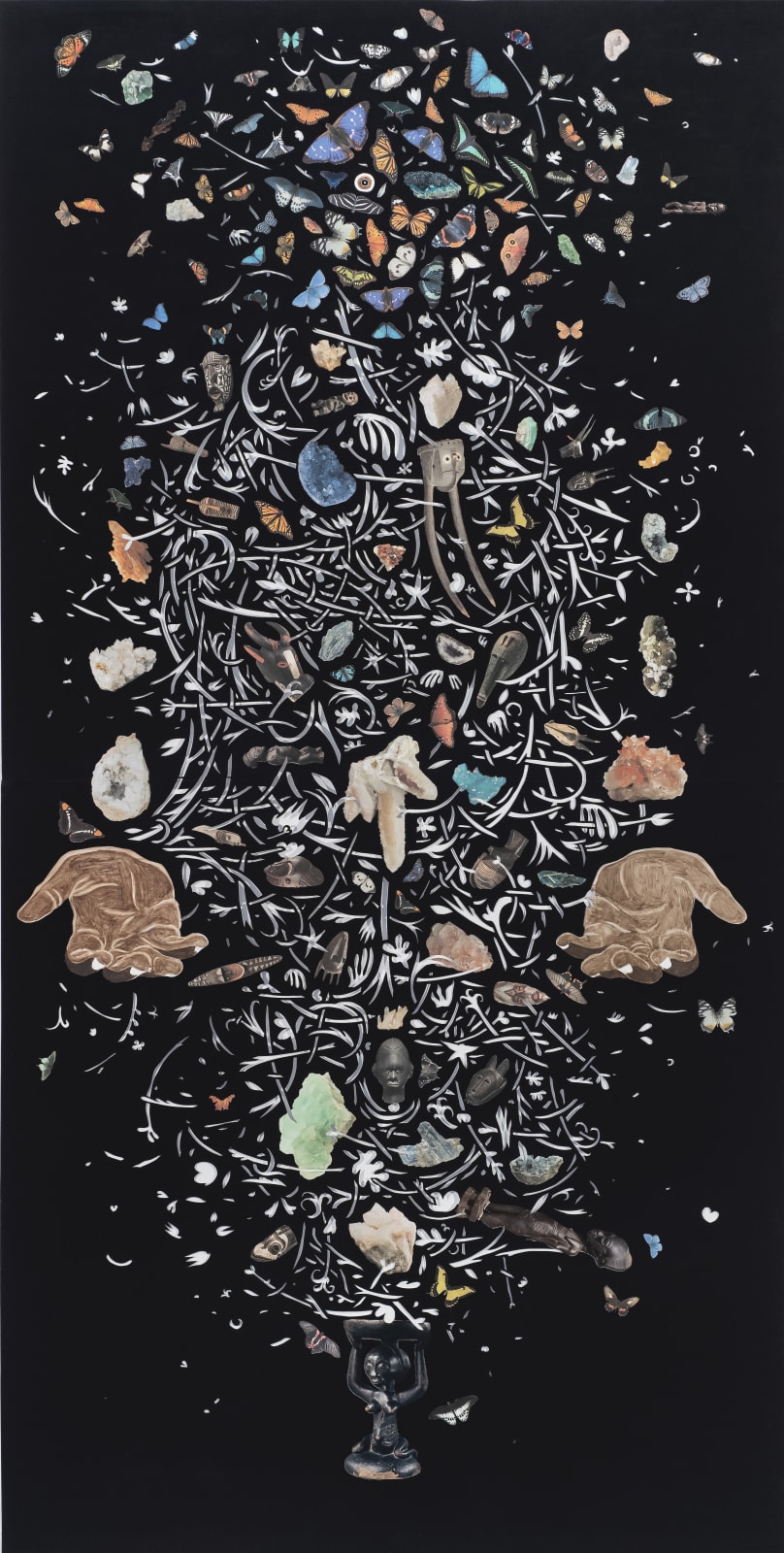-

William Villalongo
Black Metamorphosis 1452, 2020Acrylic, cut velour paper and pigment print collage80 x 40 in. Sheet
84 x 43 3/8 in. FrameUsing his signature floral motifs and black velvet cut-outs, Villalongo compels the viewer to consider the weight of history, the constructs of race, and the liminality of identity. Swirling among...Using his signature floral motifs and black velvet cut-outs, Villalongo compels the viewer to consider the weight of history, the constructs of race, and the liminality of identity. Swirling among intertwined branches and leaves are collaged images of butterflies, crystals, and African objects, from sculptures, figures, and masks. He references nature in its cyclical reformation: leaves fall from a tree, only to sprout again in spring. The caterpillar enters a chrysalis, emerging later as a butterfly. The fluttering, swirling motion of these motifs connect with the title- a "black metamorphosis"-calling attention to the transient role of the Black body throughout history.
The title itself directly references scholarship by writer Sylvia Wynter and geologist Kathryn Yusoff. In Wynter's text Black Metamorphosis, she marks the year 1452 as perhaps a more important date in marking the so-called New World, as this was the year African slaves were first transported to the sugar plantations of Madeira off the coast of Portugal. Yusoff applies Wynter's timeline in her recent publication, A Billion Black Anthropocenes or None, as a starting place for unearthing the buried histories of colonial trade and slavery. In a physiological sense, the kinetic activity of the metamorphosis speaks to the constant trade between Africa, Europe, and the Americas and, most importantly, the slavery and exploitation of African people that underpinned Euro-American freedoms and made colonial expansion possible. Beyond this period of global history, Villalongo underscores this racial oppression that has since permeated American culture. From the height of slavery, in the subsequent antebellum period, and through the modern era, this heavy history of race in the Americas is present in his work. Emphasizing liminality and transformation, Villalongo studies and transmutes the Black image, providing agency through his living motifs.
Emerging from this swirling, overlapping chaos is a human form. Two hands are outstretched spiritually to the viewer, and a single eye faces outwards amidst a whirlwind of butterflies- Villalongo thus conveys an abstract figure of the Black male. This metaphorical form interrogates the liminality held by Black presence in society, balancing visibility and invisibility, loss and agency over his own self-image. All of these attributes are balanced on the seat of an African fertility stool, featuring a figure carrying the weight of the world on her shoulders. By grounding the image on this sculpture, Villalongo once more provides a further dimension to this metaphor: he conveys the precarity of life itself and how we are all implicated in the struggles of others.


